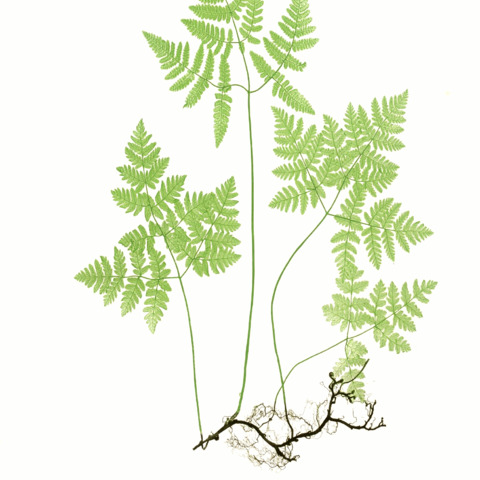Plants terrestrial. Stems long-creeping, stolons absent. Leaves monomorphic, dying back in winter. Petiole ca. 1.5--3 times length of blade, base not swollen; vascular bundles 2, lateral, ± oblong in cross section. Blade broadly deltate, ternate, or ovate, 2--3-pinnate-pinnatifid, reduced distally to pinnatifid apex, herbaceous. Pinnae weakly articulate to rachis but persistent, segment margins entire to crenate; proximal pinnae longest, petiolulate, usually ± inequilateral with pinnules on basiscopic side longer than those on acroscopic side; costae adaxially grooved, grooves not continuous from rachis to costae; indument lacking or of minute (0.1 mm) glands abaxially and sometimes along costae adaxially. Veins free, simple or forked. Sori in 1 row between midrib and margin, ± round; indusia absent. Spores brownish, rugose. x = 40.
Petiole stramineous with a dark base, slender, longer than the blade, sparsely scaly at the base, with two vascular bundles free to the apex; blade deltoid or pentagonal, 2–3 times pinnate; lower pinnae distinctly the largest, articulate at the base, long-petiolulate and inequilateral; veins free, forking, reaching the margin; sori on the anterior vein-branches; indusium none; rather small, delicate ferns with long, branched, scaly rhizomes and scattered, thin, deciduous lvs, the old petiole-bases not persisting. 6, N. Amer., Eurasia, and the Pacific Islands.
Two vascular bundles in base of stipe

